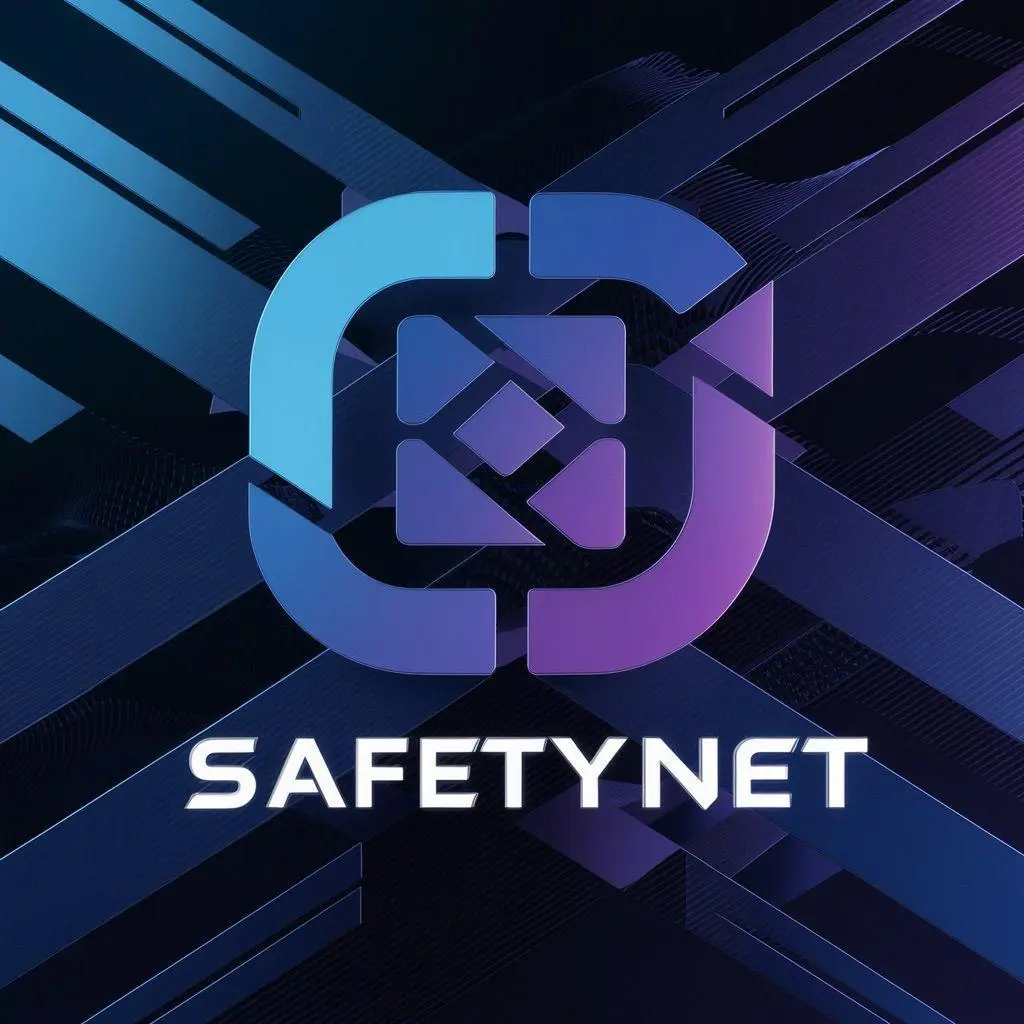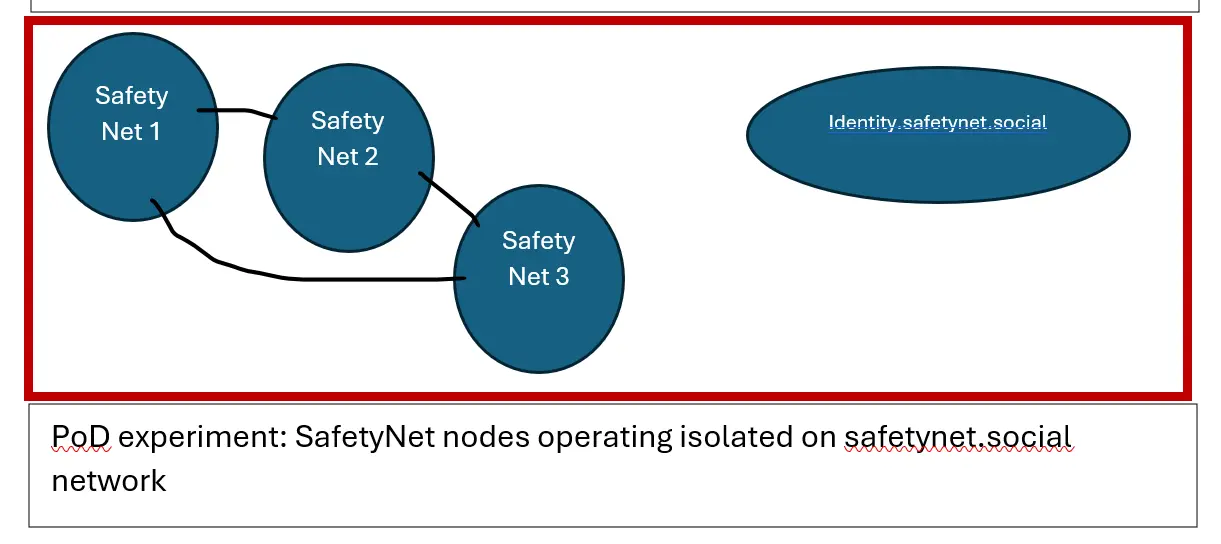Its true!!
Just want to say a big thanks to @MrTrip1et , yesterday MOM could not see the diamonds button and sent a 25 Dollar tip by accident. Instantly knew that it would be ok and it would be sent back.
@MrTrip1et is part of the @SharkGang.The shark gang are some of the hardest working oldest OGs on the chain they work hard they play hard they trade hard and they look after each other and the DESO blockchain.
Any time I see a Shark profile picture I know that account is authentic.
Once again big thanks to @MrTrip1et for his honesty.Much appreciated.
This is our masterpiece at this stage. We have worked long and hard to get this far, and now the time has come to go full scale on the testing.
======================
WIN MONEY💰💵 by reading!
======================
Read the document and this text. Write a comment with your opinion about this test and win 1 Deso.
We will be giving away 5 prizes of 1 $Deso to the five best & most well-founded comments/opinions.
You also have to share the post like it and give it 3 diamonds (non Focus).
------------------------
Who are we?
@SafetyNet is a community initiative to make the Deso blockchain:
1. Robust – adding more servers and nodes so to create more backup capacity
2. Decentralized – adding more servers and nodes in the hands of more operators
3. Secure – adding new security solutions to the software and applications
4. Redundant – making sure tasks are distributed, so a large part of the network can fail, and we still will be able to enjoy our Deso blockchain.
5. No single points of failure – functionaries, hardware, finances, communications need to be redundant and decentralized to make sure there will always be service and no ONE person or group can take control of the blockchain and its apps/ services.
What are we going we to do?
In the upcoming weeks @SafetyNet will run Deso like we do every day. The only difference will be that our SafetyNet nodes / servers are disconnected from the rest of all other Deso servers to achieve true decentralization.
We want to prove our servers are able to run the entire Deso blockchain independently.
In order to do so, we will be:
1. minting blocks – this means we will be adding all information in a block of data to be validated.
2. validating – this means that we will perform the checks if all the information in the block is correct. If so, the blocks will be permanently added to the chain.
3. conducting all possible kinds of transactions to see if we can handle all the functionality of Deso
4. Executing transactions ONLY on the SafetyNet infrastructure.
Why do we want to do this?
If we succeed, we have proven the Deso blockchain can survive on our servers and all services, token/coin info, content, #nft and personal correspondence can stay safe even if a large part of the network goes down.
What's next if we succeed?
During this test, we are totally isolated, and the blockchain is out of sync. Whether we will be successful or not, after the test we reinstate everything, and we will be in sync like nothing happened. We evaluate our findings and plan for next steps.
Wish us and our technical team success on this daunting task🥰
@erwinwillems @brootle @NFTz @mvanhalen @metaphilosopher
@nathanwells @StarGeezer @LazyNina @mossified @edokoevoet @nader @Octavie @carry2web @DiamondThumb @a_bloke @ryleesnet @darian_parrish @leojay @clayoglesby @1dolinski @nikolaiii @zordon @studio_richards @OuwePiet @Moggel @ArnoudvanderPlas @Arnoud @StevoNagy @That70sRobot .
@ThisDayInMusicHistory @ElizabethTubbs @LeilaThigpen @Jhayppy @mcmarsh @TheParkerazzi @JohnJardin @InsurgentFrog @DeSoGhost @AMurloc @TangyShroom @ArtToZ @CreativeG @ReihanRei @PenWyn @Randhir @Gatucu @JamesBarrett @Johan_Holmberg @Pixelangelo @Kaanha @Exotica_SnB @JurgenMoors @FernandoPessoa @Surya0 @BKPOWER8 @WhaleDShark

Proof of Decentralization (PoD) Experiment
Can DESO truly operate as a decentralized blockchain?
View this post at desocialworld.com/u/SafetyNetValidator/blog/proof-of-decentralization-pod-experiment

Last week I translated your safety net community file to read. You guys are progressive and hardworking. There was a lot I didn't understand but that's because I'm a regular user and not a developer.
So I'm not the one asking interesting questions but I want to wish you all the best with this testings 🍀
I love the drive 💪❤️
I don't think I understand how you will accomplish this. From my understanding, if you isolate your nodes from the DeSo network, it will do just that... isolate them. They should be able to fully function (might need to change a little code or variables). But then it wouldn't be in sync with the main network.
I think you would have to have the majority of the nodes (or the majority of the staking nodes) block communication with the core nodes to prove decentralization?
Am I off base or not understanding how the blockchain works?
@StarGeezer @carry2web @DiamondThumb @SafetyNet @Arnoud
@ArnoudvanderPlas
Experimenting is good. I wish you good luck executing the test
You are checking whether you can fork & survive, right? I'm sure you will be able to prove that
It's interesting to understand your view on the following:
- How do you plan to fund running a blockchain, once the fork is there?
- The $DESO on that fork is worthless. How will you run tokenomics on that fork?
- Since anyone can create a fork, why should apps choose your fork as a fallback
Here are my comments on the @SafetyNet plan:
True Decentralization or Just Isolation?
Disconnecting SafetyNet servers from the rest of Deso does not necessarily prove decentralization. True decentralization would require independent operators running nodes without reliance on a single group. What we need might be a Testnet kinda setup that say SafetyNet convinces MyDesoSpace, DSW and 2-3 nodes to spin off for a few days and also convinces users to use for a day or so and everything goes smoothly. Not a complete testnet, but more like a replica of state as on date X and all transactions after the switch-over would only happen on the SafetyNet server and Test apps that are part of the experiment.
Risks of Apps getting impacted:
Running a separate version of the blockchain means the SafetyNet chain might become out of sync. What happens to nodes that rely on SafetyNet for their app? e.g. MyDesoSpace, Say BeyondApp (not sure if it is).
Potential Issues:
If transactions are executed only within the SafetyNet infrastructure, what mechanisms ensure they remain valid when syncing back to the main chain? Esp if you plan to run this on a live app. Goes back to my suggestion of running this as a beta.safetynet.app or something like that and convincing one or more apps including your own node and convincing users to use it.
Testing Scenarios:
I assume there's a set of block producers in some point in the code and you are setting everything to include only your block producers. What happens when say 1 or say 10 other nodes have different block producers. Depending on how nodes get preference(speed or resources), what if other nodes have more weightage and confirm different blocks. Will you be testing that?
Scalability & Performance Testing
While running the entire blockchain independently is impressive, does the test simulate real-world stress? How will you test scalability, uptime, and resilience under heavy traffic or attack scenarios? Testing with 10-15 users and testing with even 100 users is a different thing as we have seen in the last day or so.
Centralized Control During the Test
While aiming for decentralization, the test structure seems highly centralized—one entity controlling nodes, validation, and transactions. How can this setup truly reflect a decentralized and redundant network?
Reintegration Plan Clarity
The document states, "after the test, we reinstate everything, and we will be in sync like nothing happened." How exactly will the reintegration work? Will there be data reconciliation to prevent inconsistencies?
Next Steps Beyond the Test
If the test is successful, what concrete steps will be taken to further decentralize and distribute control of the blockchain? Will new independent node operators be onboarded? Will there be improvements in governance structures?
Final Thought: The initiative is ambitious and could contribute to making Deso more resilient, but without clear solutions for reintegration risks and ensuring true decentralization, the test might only demonstrate temporary isolation rather than long-term redundancy.
First I've heard about this. Great initiative! 👏👏👏👏
Last week I translated your safety net community file to read. You guys are progressive and hardworking. There was a lot I didn't understand but that's because I'm a regular user and not a developer.
So I'm not the one asking interesting questions but I want to wish you all the best with this testings 🍀
I love the drive 💪❤️
I don't think I understand how you will accomplish this. From my understanding, if you isolate your nodes from the DeSo network, it will do just that... isolate them. They should be able to fully function (might need to change a little code or variables). But then it wouldn't be in sync with the main network.
I think you would have to have the majority of the nodes (or the majority of the staking nodes) block communication with the core nodes to prove decentralization?
Am I off base or not understanding how the blockchain works?
@StarGeezer @carry2web @DiamondThumb @SafetyNet @Arnoud
@ArnoudvanderPlas
Experimenting is good. I wish you good luck executing the test
You are checking whether you can fork & survive, right? I'm sure you will be able to prove that
It's interesting to understand your view on the following:
- How do you plan to fund running a blockchain, once the fork is there?
- The $DESO on that fork is worthless. How will you run tokenomics on that fork?
- Since anyone can create a fork, why should apps choose your fork as a fallback
Here are my comments on the @SafetyNet plan:
True Decentralization or Just Isolation?
Disconnecting SafetyNet servers from the rest of Deso does not necessarily prove decentralization. True decentralization would require independent operators running nodes without reliance on a single group. What we need might be a Testnet kinda setup that say SafetyNet convinces MyDesoSpace, DSW and 2-3 nodes to spin off for a few days and also convinces users to use for a day or so and everything goes smoothly. Not a complete testnet, but more like a replica of state as on date X and all transactions after the switch-over would only happen on the SafetyNet server and Test apps that are part of the experiment.
Risks of Apps getting impacted:
Running a separate version of the blockchain means the SafetyNet chain might become out of sync. What happens to nodes that rely on SafetyNet for their app? e.g. MyDesoSpace, Say BeyondApp (not sure if it is).
Potential Issues:
If transactions are executed only within the SafetyNet infrastructure, what mechanisms ensure they remain valid when syncing back to the main chain? Esp if you plan to run this on a live app. Goes back to my suggestion of running this as a beta.safetynet.app or something like that and convincing one or more apps including your own node and convincing users to use it.
Testing Scenarios:
I assume there's a set of block producers in some point in the code and you are setting everything to include only your block producers. What happens when say 1 or say 10 other nodes have different block producers. Depending on how nodes get preference(speed or resources), what if other nodes have more weightage and confirm different blocks. Will you be testing that?
Scalability & Performance Testing
While running the entire blockchain independently is impressive, does the test simulate real-world stress? How will you test scalability, uptime, and resilience under heavy traffic or attack scenarios? Testing with 10-15 users and testing with even 100 users is a different thing as we have seen in the last day or so.
Centralized Control During the Test
While aiming for decentralization, the test structure seems highly centralized—one entity controlling nodes, validation, and transactions. How can this setup truly reflect a decentralized and redundant network?
Reintegration Plan Clarity
The document states, "after the test, we reinstate everything, and we will be in sync like nothing happened." How exactly will the reintegration work? Will there be data reconciliation to prevent inconsistencies?
Next Steps Beyond the Test
If the test is successful, what concrete steps will be taken to further decentralize and distribute control of the blockchain? Will new independent node operators be onboarded? Will there be improvements in governance structures?
Final Thought: The initiative is ambitious and could contribute to making Deso more resilient, but without clear solutions for reintegration risks and ensuring true decentralization, the test might only demonstrate temporary isolation rather than long-term redundancy.
First I've heard about this. Great initiative! 👏👏👏👏